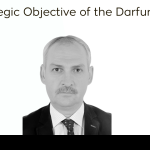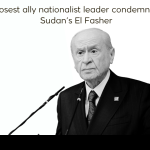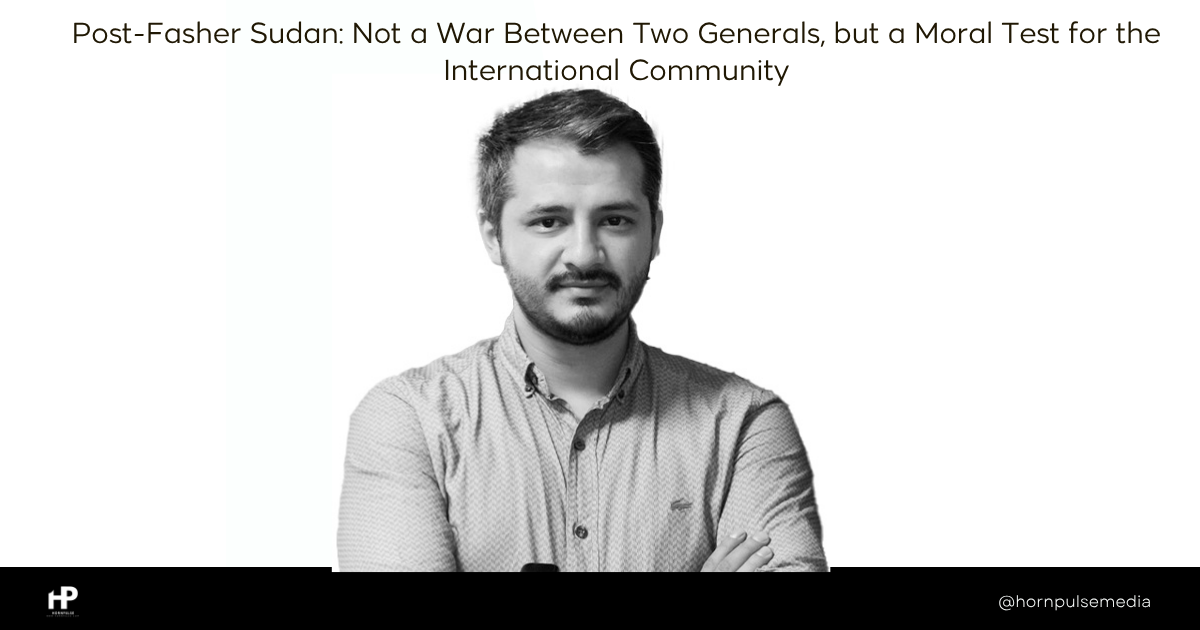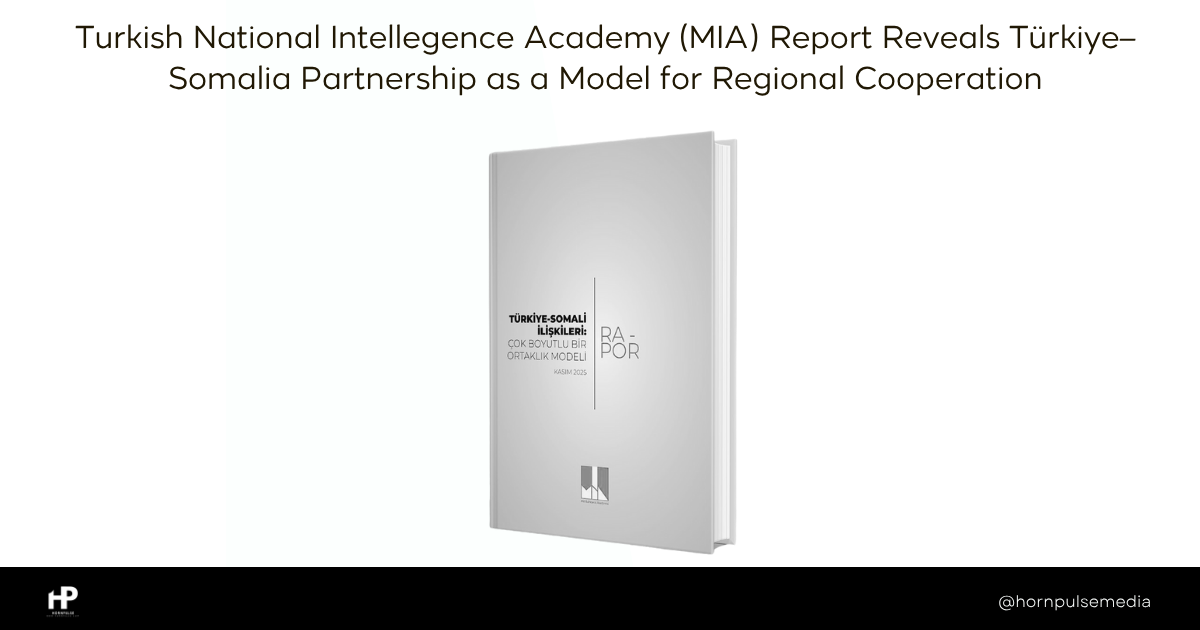
The Strategic Objective of the Darfur Massacre
November 4, 2025
Erdoğan’s closest ally nationalist leader condemns atrocities in Sudan’s El Fasher
November 4, 2025Post-Fasher Sudan: Not a War Between Two Generals, but a Moral Test for the International Community

The Rapid Support Forces’ (RSF) capture of El Fasher on October 26–27, 2025, marks a historic turning point that has radically altered the notions of authority and sovereignty not only in Darfur but across all of Sudan. Indeed, the fall of El Fasher into RSF hands, coupled with the existence of a parallel government, has deepened the geographic and political divide — raising the likelihood that the country will split into two distinct zones of control. At this stage of the war, civilians have become direct targets, and the humanitarian crisis has surpassed all thresholds. The ineffectiveness and delayed response of the international community stand out as the primary reasons Sudan has reached this catastrophic point.
A Prolonged Siege and Weaponization of Starvation
The siege of El Fasher lasted for over a year. Hunger, thirst, and the lack of medicine were systematically used as weapons, and humanitarian aid was deliberately blocked. According to the United Nations (UN), more than 250,000 civilians — half of them children — were trapped in the city. The RSF built a 56-kilometer earthen barrier to completely isolate the city from the outside world, preventing the entry of food and medical supplies. This strategy demonstrates that the conflict has evolved from a military confrontation into an immoral campaign of civilian control through starvation and deprivation.
Reports of Mass Executions and Systematic Violence
Following the RSF’s seizure of El Fasher, reports have emerged of mass executions, targeted assassinations, and widespread violence. The killing of former Member of Parliament Siham Hasan Husballah Ali stands out as one of the clearest examples of attacks targeting those coordinating civilian aid. These acts indicate that the RSF seeks not only military but also social dominance, viewing any effort to build civilian opposition as a threat. The detention of journalists, the collapse of communication infrastructure, and the bombing of hospitals point to a deliberate information blackout and a fear-based model of governance.
The UN High Commissioner for Human Rights and several independent organizations have obtained evidence suggesting that RSF fighters have carried out ethnically motivated executions. These allegations have revived debates over genocide in Darfur, reminiscent of the atrocities of the early 2000s. Historical memory shows how devastating and lasting the consequences are when non-state armed groups are allowed unchecked power in Darfur. What is happening today echoes the period once vowed to be “never again.”
A Weakening State and the Rise of Parallel Authority
Sudan’s army has become increasingly passive. General Abdel Fattah al-Burhan, head of the Sovereign Council, justified the withdrawal from El Fasher as a “tactical move to a safer area.” However, this retreat has left civilians defenseless and eroded public trust in the army. As the state’s legitimacy weakens, the RSF’s goal of establishing a “regional administration” centered in Darfur is gaining ground. This represents the construction of a parallel authority that threatens Sudan’s territorial integrity.
The International Community’s Moral Test
The international response has been extremely limited. UN Secretary-General António Guterres described the developments in El Fasher as “horrifying,” and the African Union warned of “crimes against humanity.” The United States, the European Union, Turkey, and Egypt have called for an immediate ceasefire, while Chad has strengthened its border security in preparation for a new wave of refugees. However, these statements lack the capacity to alter the dynamics of violence on the ground. The gap between diplomatic rhetoric and real coercive action continues to widen, enabling the RSF to consolidate its power.
The greatest flaw of the international system lies in its persistent framing of the Sudanese conflict as merely a power struggle between two generals. In reality, what is happening now goes far beyond an elite rivalry — it is a process of collective punishment based on social groups, ethnic identities, and human values. Preventing this humanitarian disaster is not merely a matter of political negotiation; it is a moral test that challenges the legitimacy and conscience of the international community.
Scenarios for Sudan’s Future
The fall of El Fasher is not just a turning point in the Sudanese war but also the threshold of darker possibilities for the country’s future. As of now, there is neither a balance of power on the ground nor a credible platform for dialogue at the negotiating table. Sudan faces three possible scenarios: de facto division, a forced ceasefire, or renewed escalation.
1. De facto division:
Sudan may effectively split into two zones of authority — the RSF controlling Darfur and the southern belt, and Burhan’s army maintaining control in the north and east. This could recreate the trauma of South Sudan’s secession in 2011. The country could fragment into ethnically based administrative regions under armed control, forming a loose confederation. Such an outcome would deepen the humanitarian disaster and entrench ethnic cleansing in Darfur, potentially pushing Sudan toward a Somalia-style state collapse.
2. A forced ceasefire:
International pressure from actors such as Turkey, Egypt, Chad, the Gulf states, and the United States could force the warring sides into a temporary halt. Such a ceasefire would be meaningful mainly for protecting civilians and opening humanitarian corridors but would not guarantee lasting peace. Nonetheless, it could create a brief “breathing space” that allows diplomacy to resume, with regional organizations like the African Union and IGAD playing crucial mediation roles.
3. Renewed escalation:
The most dangerous scenario involves the war reigniting toward the capital. The RSF’s new operational freedom after El Fasher could lead to fresh offensives toward the east, especially around Khartoum and the Nile Valley. This could trigger large-scale urban warfare, with air strikes and artillery shelling causing massive civilian casualties and irreversible damage to infrastructure. In this case, the war would evolve from a Darfur-centered crisis into a nationwide catastrophe.
A Test of Human Conscience
All three scenarios share one outcome — the near impossibility of Sudan reuniting under a central authority in the near future. As the state collapses institutionally and economically, mass displacement and humanitarian catastrophe are spilling across borders, threatening the stability of fragile neighbors like Chad, South Sudan, and the Central African Republic. Thus, the Sudan conflict is no longer an internal affair; it is a regional crisis affecting the entire Sahel–Red Sea security architecture.
In conclusion, Sudan’s future is no longer a matter of military victory but of human conscience. If the international community continues to view the conflict as “a war between two generals,” the tragedy of El Fasher will become a symbol of Sudan’s permanent fragmentation — and of millions trapped between life and death. What happens next depends on whether genuine diplomatic efforts are made to rebuild peace. Sudan is no longer just a battlefield; it is a mirror reflecting the international system’s sense of moral responsibility.
Dr. Kaan Devecioğlu is the Coordinator of ORSAM’s North and East Africa Studies.

